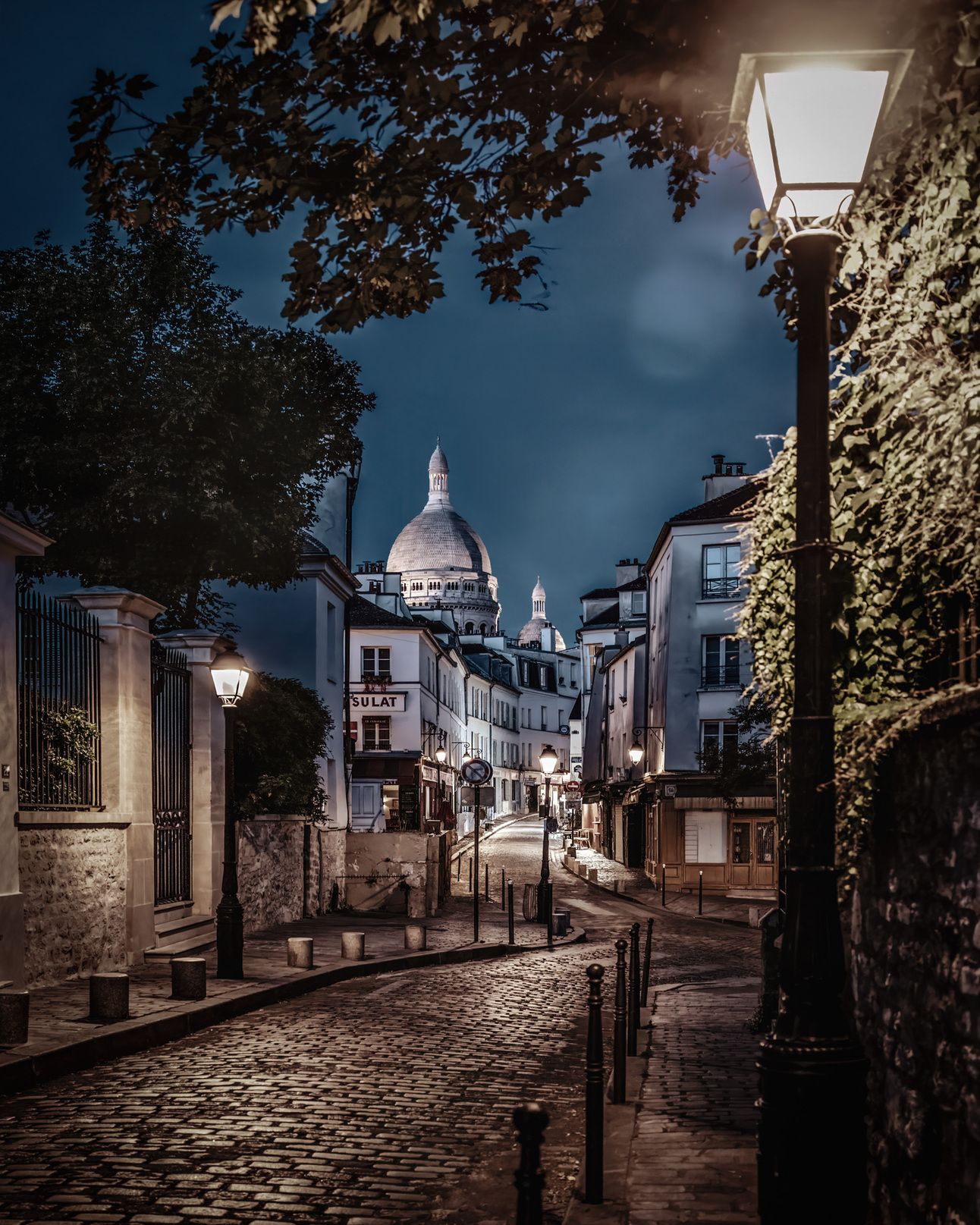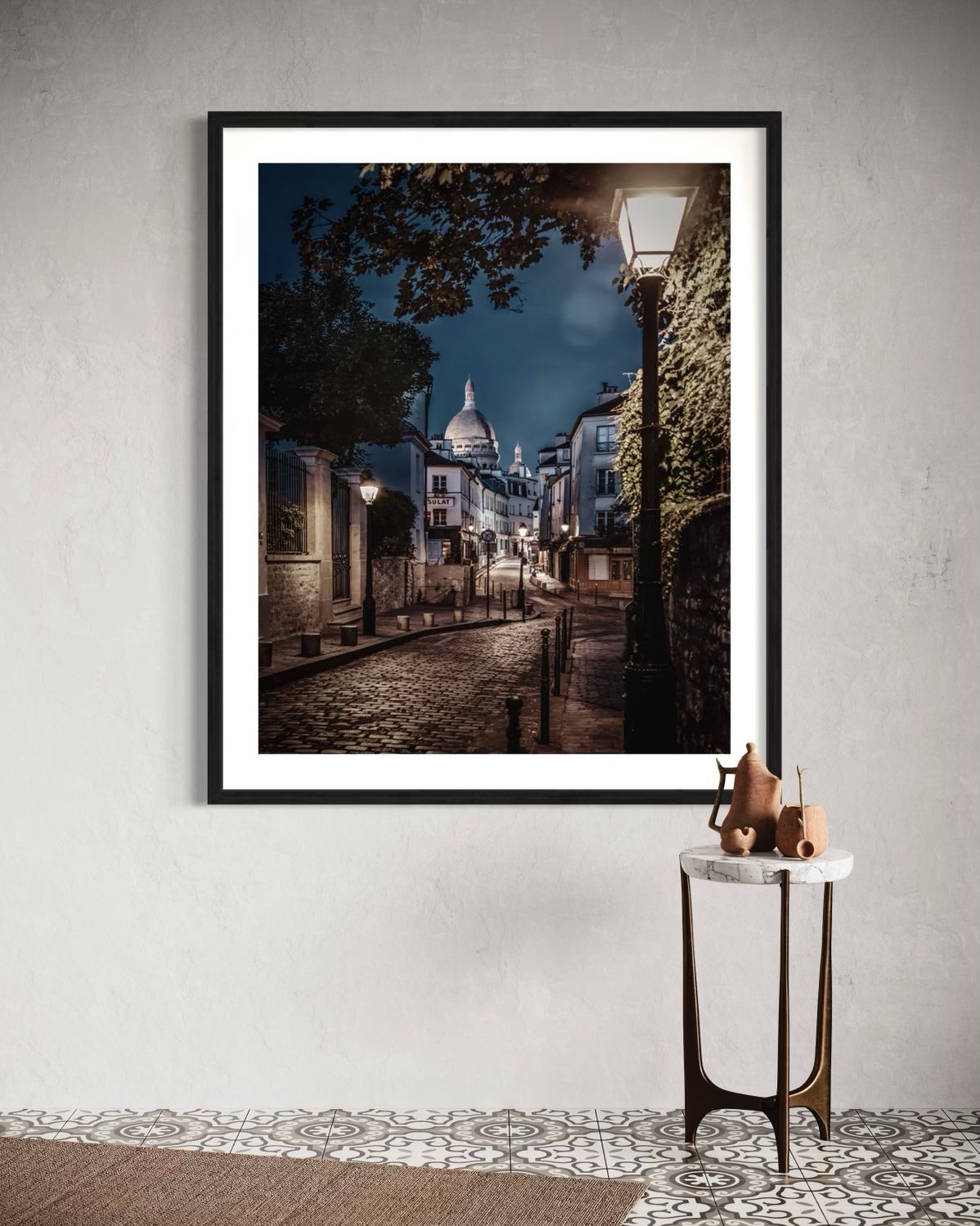In This Issue of The Paris Love Letter
Café Culture: Paris, No Croissant? Say It Ain’t So!
Hidden Gems: Rue Cremieux - Paris' Own Rainbow Road
Art & Literature: Atelier Descent - The Montmartre Studios That Witnessed Artistic Revolutions
A Peek into History: Street Signs - Narrators of Parisian Lore
Fun & Unusual Stuff: Parisian Elevators - The Ups & Downs of Tight Spaces
Featured French Song: "Aline" by Christophe.
Reader Poll
Thank you to everyone who took a moment to participate in last week's poll. Your insights help us get to know you better and shape the content we curate. Among the feedback, one poignant sentiment stood out, capturing the essence of what many feel: “I only feel my soul at peace in Paris.” Sentiments like these drive our passion and remind us of the magic Paris holds for so many.
Last Week’s Poll Results:
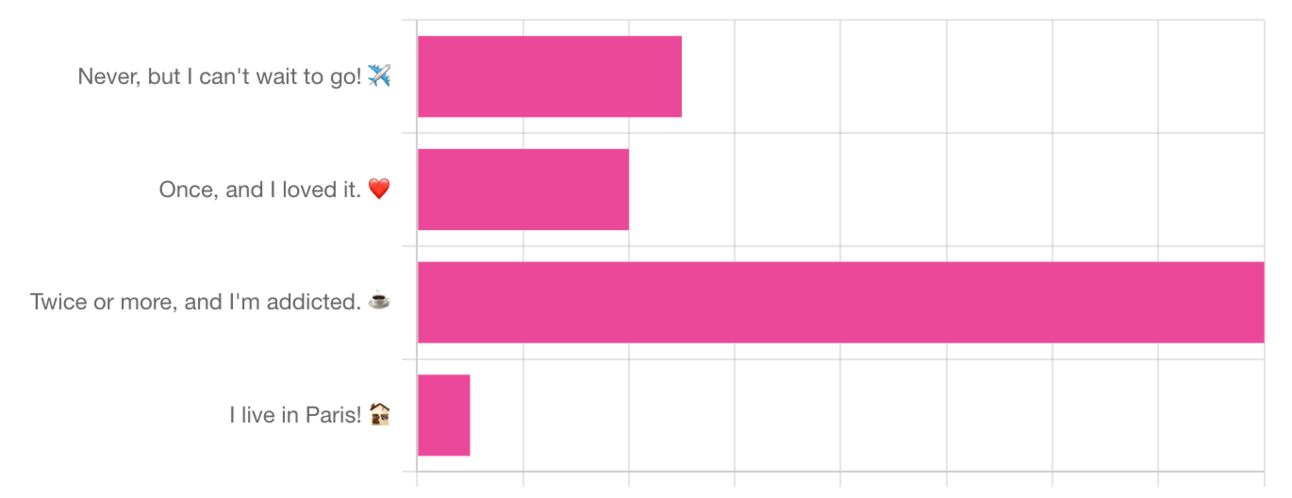
Found in Paris: Fun & Useful Stuff From The Web
➡️ A Family City Guide to Paris - For anyone traveling to Paris as a family with kids, this could be a helpful read from National Geographic.
➡️ The Best Times to Visit Paris for Great Weather, Events, and Fewer Crowds - Considering a trip to Paris? This could be a good read from Travel + Leisure. My personal recommendation leans towards the shoulder seasons, flanking the summer rush. Growing up in the US Northeast, autumn always held a special place in my heart. There's something undeniably charming about Paris as it shifts from the balmy embrace of summer to the crisp allure of fall.
Café Culture: Paris, No Croissant? Say It Ain’t So!

It's 8 AM. Paris is stretching her limbs, yawning, waking up to the sacred ritual of coffee and croissants. Now, let’s face it: there are few heartbreaks as profound as walking into your local boulangerie, anticipating that buttery, flaky miracle, only to be told, “Desolé, we’re out.” Out of croissants? In Paris? It’s like Keith Richards without a guitar, a sin against nature.
In these moments, I imagine the entire city screeching to a halt. Street musicians missing a beat, poets losing their rhyme, lovers pausing mid-kiss. But here's the Parisian magic: life goes on. The barista will give you that knowing nod, maybe a wry smile, offering a pain au chocolat or a tarte aux pommes as an act of solace.
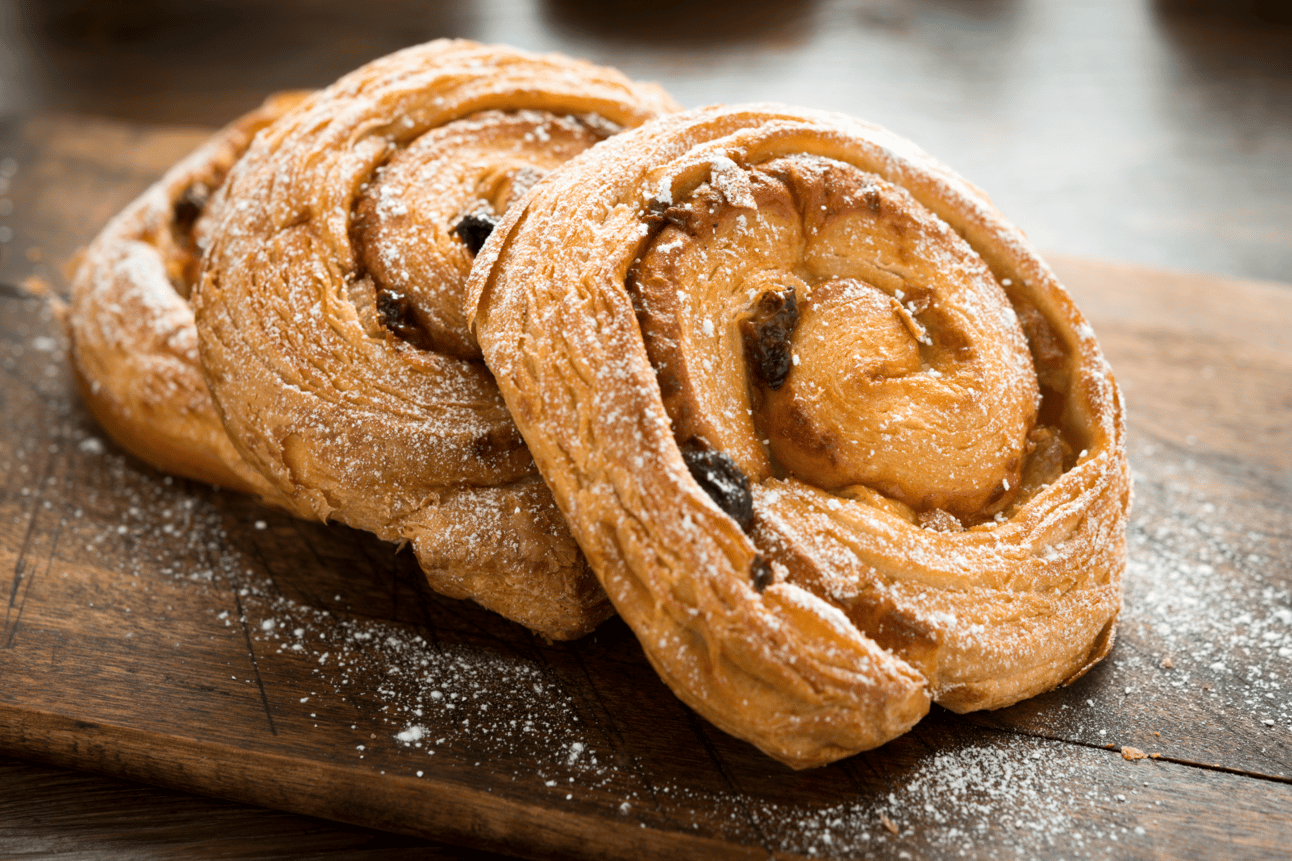
Pain aux raisins/Escargot
Sure, for some, it's just breakfast. But for those who truly get the Parisian rhythm, it's a brief moment of chaos in the orchestrated ballet of city life. And in that chaos, there's a story, a chuckle, a shared experience that, in its own odd way, binds us all a little closer to this mad, marvelous city.
But hey, life in Paris without a croissant? We adapt. When the universe denies you that golden crescent of happiness, Laura and I have our go-to alternatives.
In a café, your choices will be less abundant, but here are a couple of options:
Pain au Chocolat: Because chocolate makes everything better.
Tartine with Butter and Jam: It’s simple yet undeniably Parisian.

Tartine with butter and jam
At a boulangerie or coffee shop, the selection expands. When I asked Laura for her top picks, her eyes lit up. Here they are:
Almond Croissant: A delightful twist on the classic with a sweet, nutty allure.
Chausson aux Pommes: Apple sauce nestled in buttery puff pastry.
Grillé aux Pommes: Almost the same as above, it’s a delicious puff-pastry viennoiserie filled with a sweet apple.
Chouquettes: Airy pastry balls crowned with pearl sugar.
Brioche: Soft, rich bread with a hint of sweetness.
Pain au Lait aux Pépites de Chocolat: Milky bread dotted with chocolate chips.
Jésuite: Triangular pastry filled with almond cream, crisp on top.
Pain aux raisins/Escargot: Swirly, raisin-y goodness that’s almost too pretty to eat. Almost.
Because, at the end of the day, even when the City of Light throws a curveball, there's always a delicious workaround. Paris, you sly fox, you know how to keep us on our toes.
Hidden Gems: Rue Cremieux - Paris' Own Rainbow Road

Rue Cremieux
Step onto Rue Cremieux, and for a fleeting moment, you might think you've been spirited away to London's Notting Hill or perhaps the color-charged streets of Burano, Italy. But no, this is very much Paris – though not the Paris many casual wanderers expect.
Each house, with its pastel façade – from lavender blues to cotton candy pinks – seems to shout out its little history, making the entire lane a pastel patchwork of stories. You'd be forgiven for thinking this place was conjured up for the Instagram age. But long before influencers tip-toed down its cobblestones seeking the perfect backdrop, Rue Cremieux was a tale of community and innovative living.
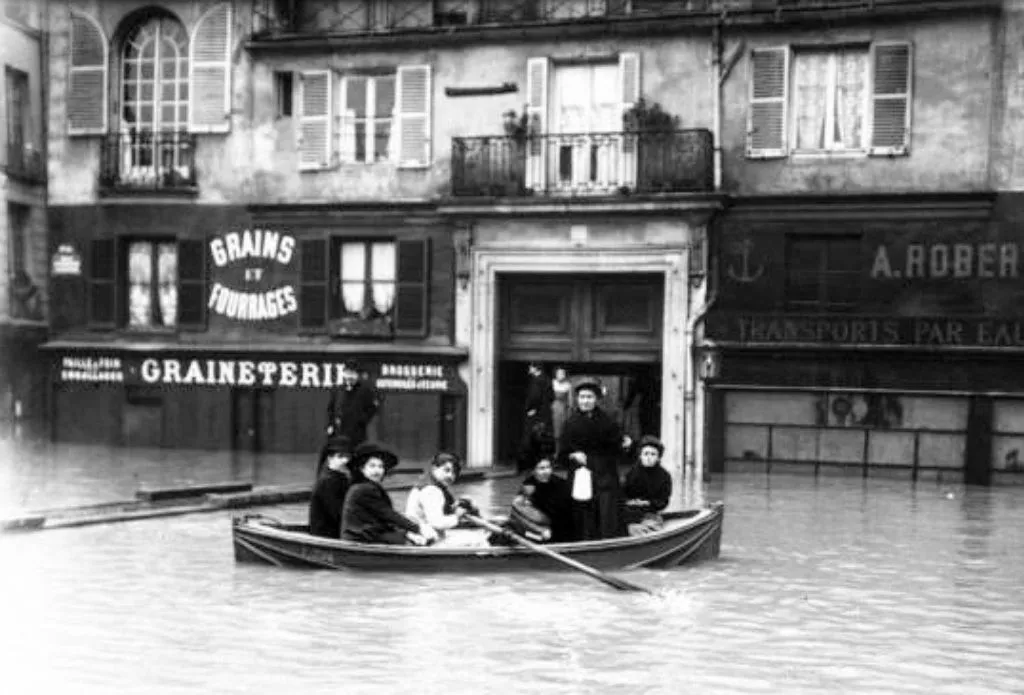
Photo of Rue Cremieux from 1910, during the Seine River flood.
One of Paris's earliest housing cooperatives, it was an audacious experiment in affordable housing in the late 19th century. These homes were the dreams of working-class Parisians, built as a tight-knit community setting. It's ironic how a street rooted in communal living now often gets reduced to just a backdrop for solitary photos.
So, by all means, take your snapshots. But then, maybe sit on those steps. Watch the play of light as the day ages, listen to the murmur of life within these homes, and let the real story of Rue Cremieux unfold around you – a story of community, color, and a corner of Paris that dances to its own vibrant beat.
Art & Literature: Atelier Descent - The Montmartre Studios That Witnessed Artistic Revolutions
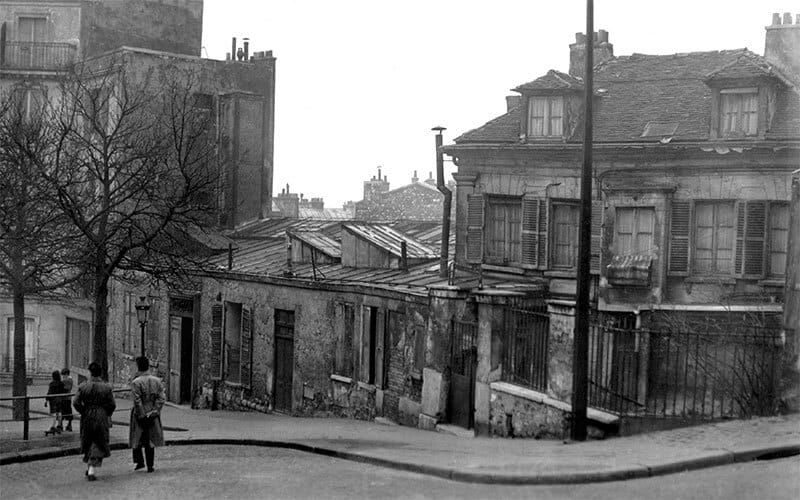
Le Bateau-Lavoir, c. 1910
The hill of Montmartre has always held a magnetic pull for artists, drawing them into its winding, cobbled embrace. Beyond the mesmerizing views of Paris from the Sacré-Cœur, it's the spirit of Montmartre that's been the true siren song for creatives. This enclave buzzed with innovation, particularly within its storied ateliers.
Names like Picasso and Modigliani weren't just whispered in elegant salons; they echoed through spaces like the Bateau-Lavoir, where brushes danced and canvases evolved. These ateliers were the epicenter of passionate debates, groundbreaking techniques, and bohemian freedom.
What set these studios apart? It wasn't just the chance to break from academic norms but the sense of unity. The camaraderie in these hallowed halls painted a picture of collective ambition, of dreams meshing and mingling.
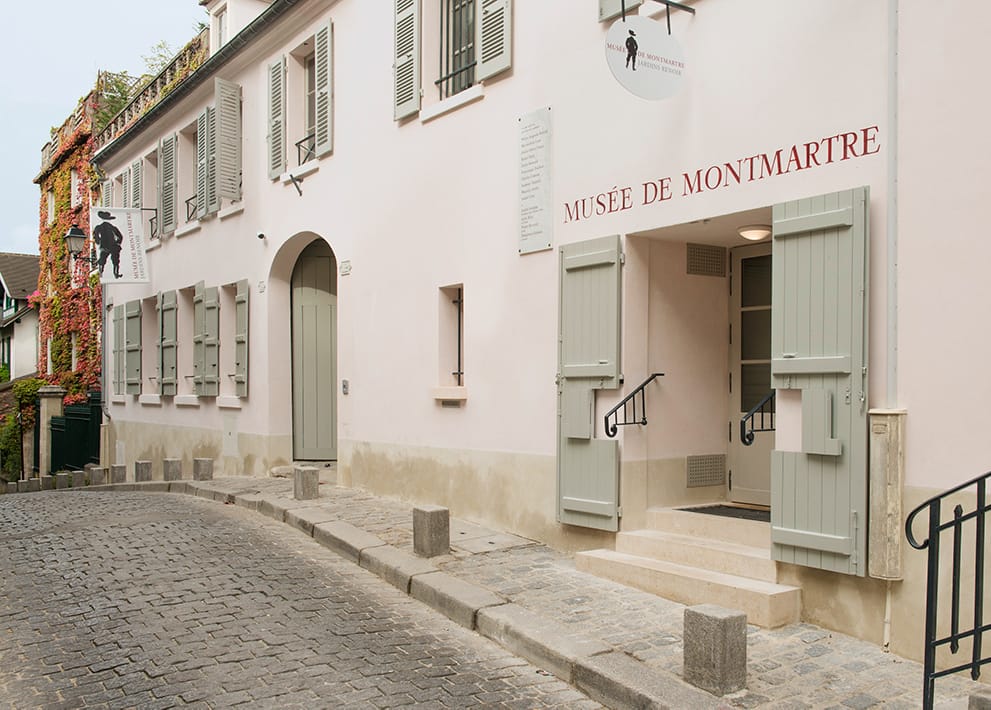
Montmartre Museum
While the Montmartre of today might entertain more tourists than bohemians, traces of its illustrious past remain. The Bateau-Lavoir at 13 Rue Ravignan stands as a tribute to a bygone era, having once housed Picasso and Braque. Further down at 12 Rue Cortot, you can find the old haunt of Renoir, now the Montmartre Museum. Walking these streets, one can almost hear the laughter, debates, and the clinking of wine glasses from yesteryears, painting a vivid tapestry of a Montmartre that once was.
And while strolling, it's hard not to feel the allure of these streets, reminding us that art isn't just about observation but immersion.
A Peek into History: Street Signs - Narrators of Parisian Lore
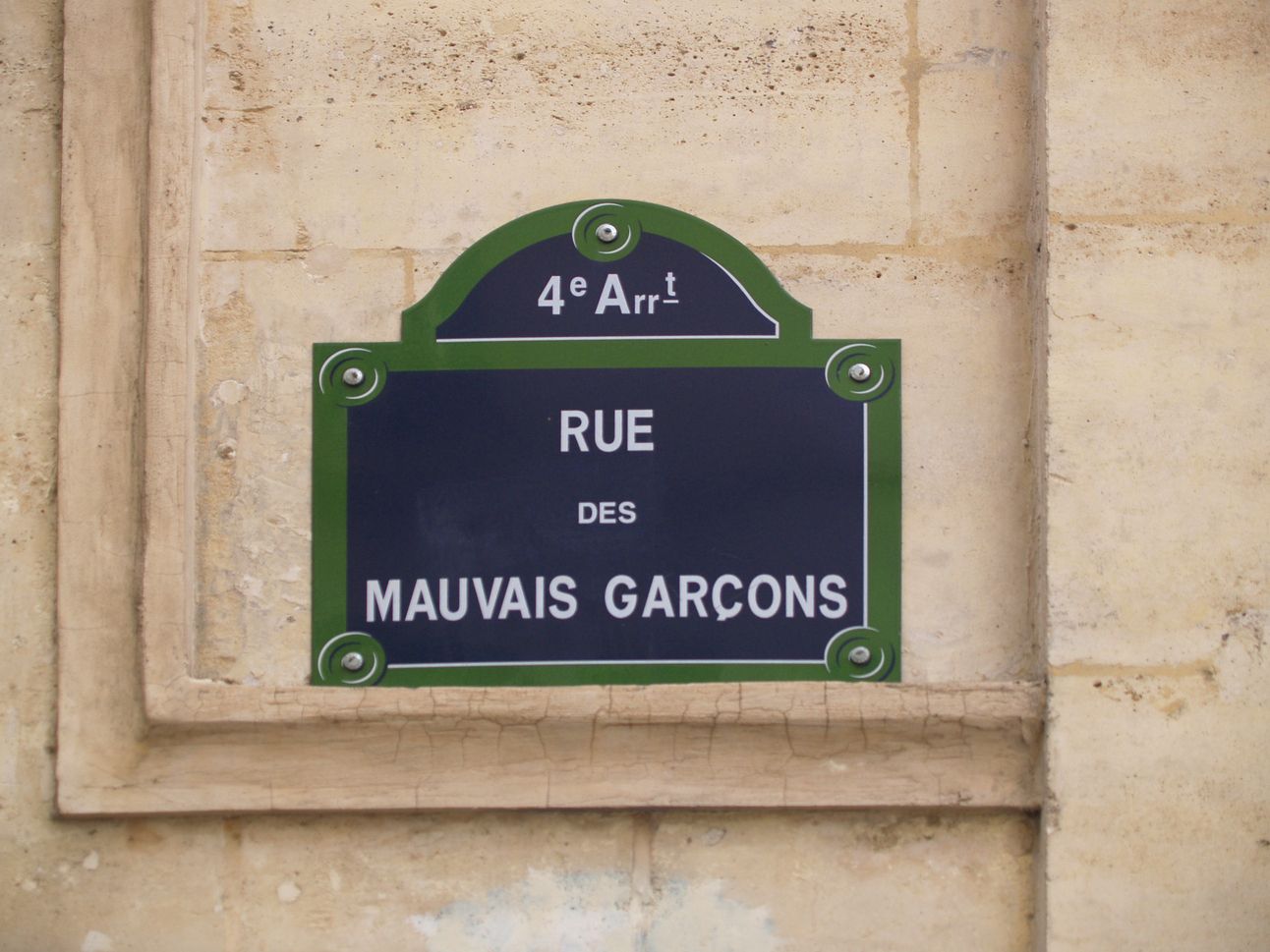
You could spend a lifetime wandering Paris and still only scratch the surface. But there’s a secret layer of stories beneath your feet and just above eye level: the street signs. Not just mere indicators of your location but emblems of tales, histories, and revolutions.
Rue de la Harpe: This street existed during Roman times and winds through the Latin Quarter, historically home to student protests and bohemian ideals. The name 'Harpe' might be musical, but its origin is obscure; some say it's due to an old sign, and others believe it's the shape of the street. Whatever the truth, each cobblestone here echoes with the steps of countless scholars and dreamers.
Rue du Chat-qui-Pêche: Translated to "The Street of the Fishing Cat," this quirky name for one of Paris's narrowest streets dates back to the 16th century. Legend has it a cunning cat would fish from the riverbank, and its owner, a monk, was suspected of witchcraft because of the feline's unnatural skill. To this day, the street remains a favorite for its name alone.
Rue des Mauvais Garçons: The "Street of Bad Boys". The name might conjure images of leather-clad rebels or artistic avant-garde, but its history is more straightforward. In earlier times, this was a den of pickpockets and hustlers, thus earning its not-so-saintly title.
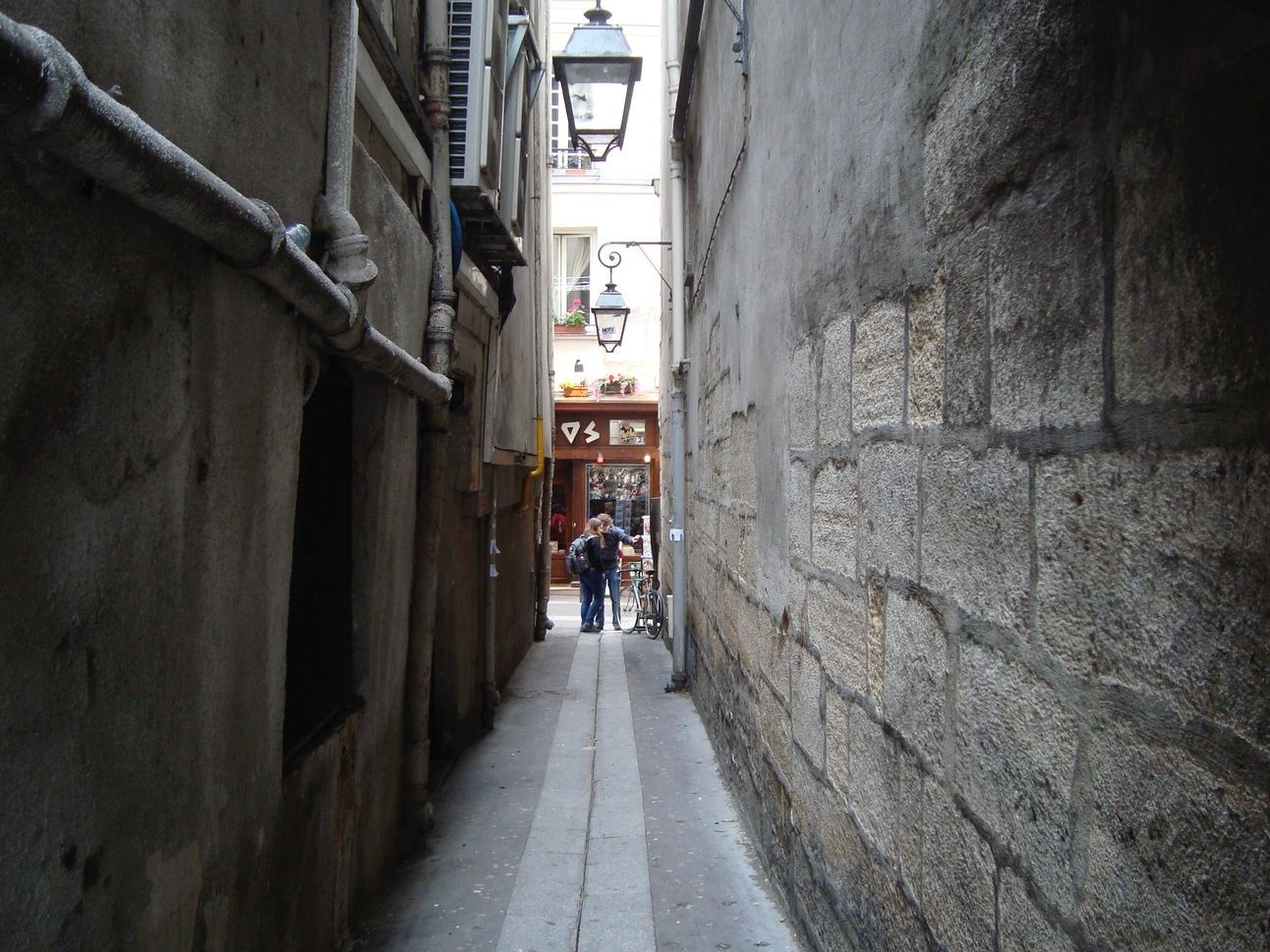
Rue du Chat-qui-Pêche
It's easy to lose oneself in the grandeur of Notre-Dame or the vastness of the Louvre. But sometimes, it's the smaller, more subtle details—like the name of a street—that tell the most intriguing tales. So, the next time you’re wandering the City of Light, take a moment to look up and read the signs. They're more than directions; they're the condensed stories of the Parisian soul.
Fun & Unusual Stuff: Parisian Elevators - The Ups & Downs of Tight Spaces
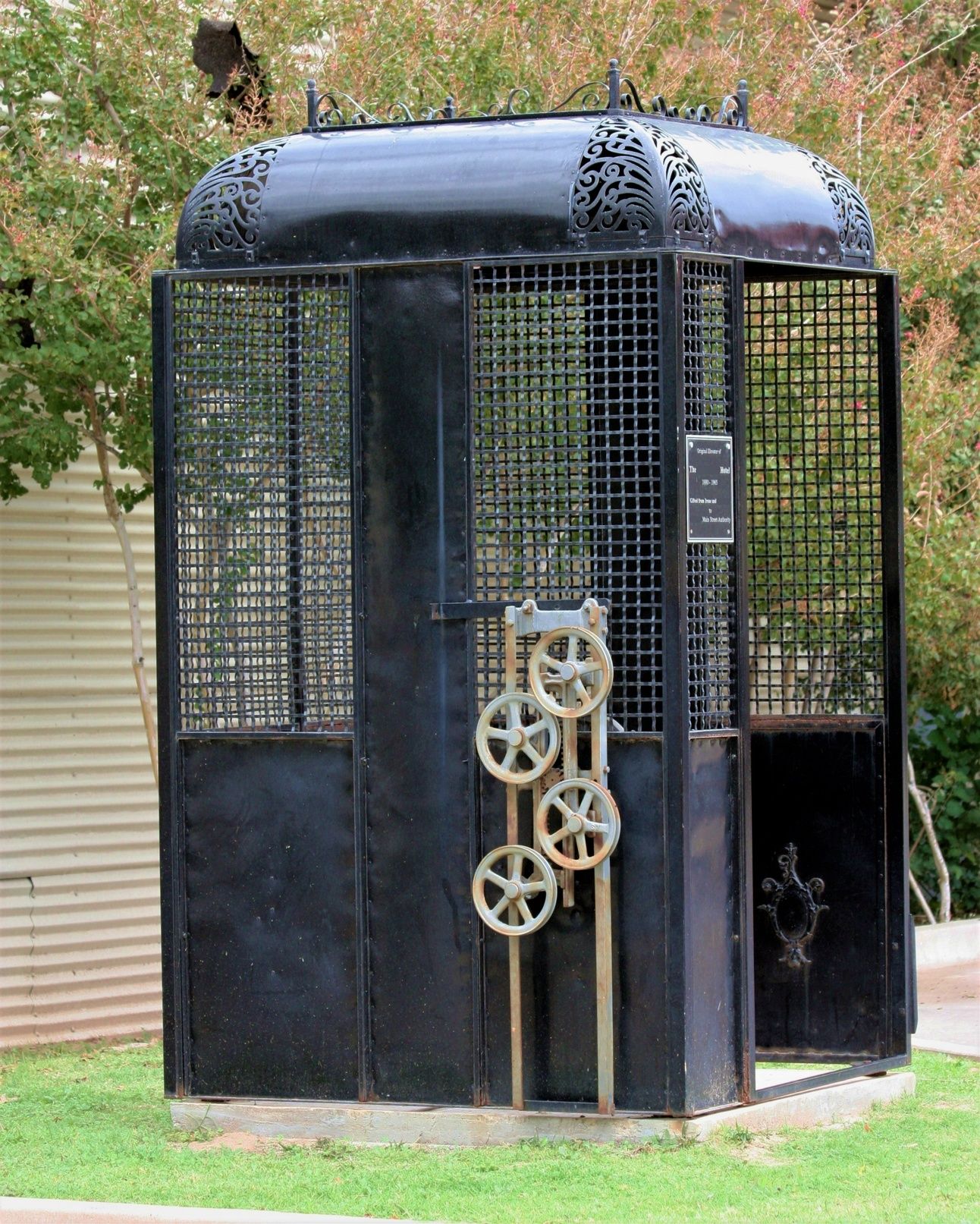
Ah, the Parisian elevator, or as I like to call it, the sardine can of human ascension. If you’ve ever stayed in one of the old Haussmann-era buildings, you’ll know exactly what I'm talking about. Entering one is like being privy to a practical joke that's been running for over a century.
First, there's the size. Created during a time when "personal space" was apparently a radical concept, these elevators seem to defy physics. You, your partner, and maybe a baguette (if it's feeling slim that day) can squeeze in, but add one more grocery bag, and you might just find yourself becoming better acquainted with your neighbors than you'd ever planned.
The buttons? They're an adventure of their own. Some are relics from another era, requiring the precision of a jeweler to press, while others appear to have been inspired by a game of Whack-a-Mole.
Yet, there's a charming resilience to these minuscule vertical voyagers. In a world obsessed with going big, Paris holds onto its tiny elevators with pride and a hint of defiance. And there’s something deeply Parisian about that — a celebration of history, quirk, and making the most of small spaces.
Featured French Song
"Aline" by Christophe: A romantic ballad from the 1960s that remains popular.
Featured Print
“Blue Hour over Montmartre: A Luminous Prelude”
Readers Get 25% off at James Knight Gallery with Coupon Code: PARISLOVELETTER
As twilight deepens, Montmartre awakens, bathed in the ethereal glow of the blue hour. Illuminated lamp posts stand as silent sentinels, guiding the way through the meandering streets, each light a beacon against the encroaching night. In the distance, the Sacré-Cœur perches regally, casting its venerable silhouette against the cerulean sky. It's in moments like these that the spirit of Montmartre feels most alive, each cobblestone and corner echoing tales of artists, lovers, and dreamers who once tread the same path. This image is a visual treat and a soulful ode to Paris's enduring romance.
Bon Weekend!
Laura & James
